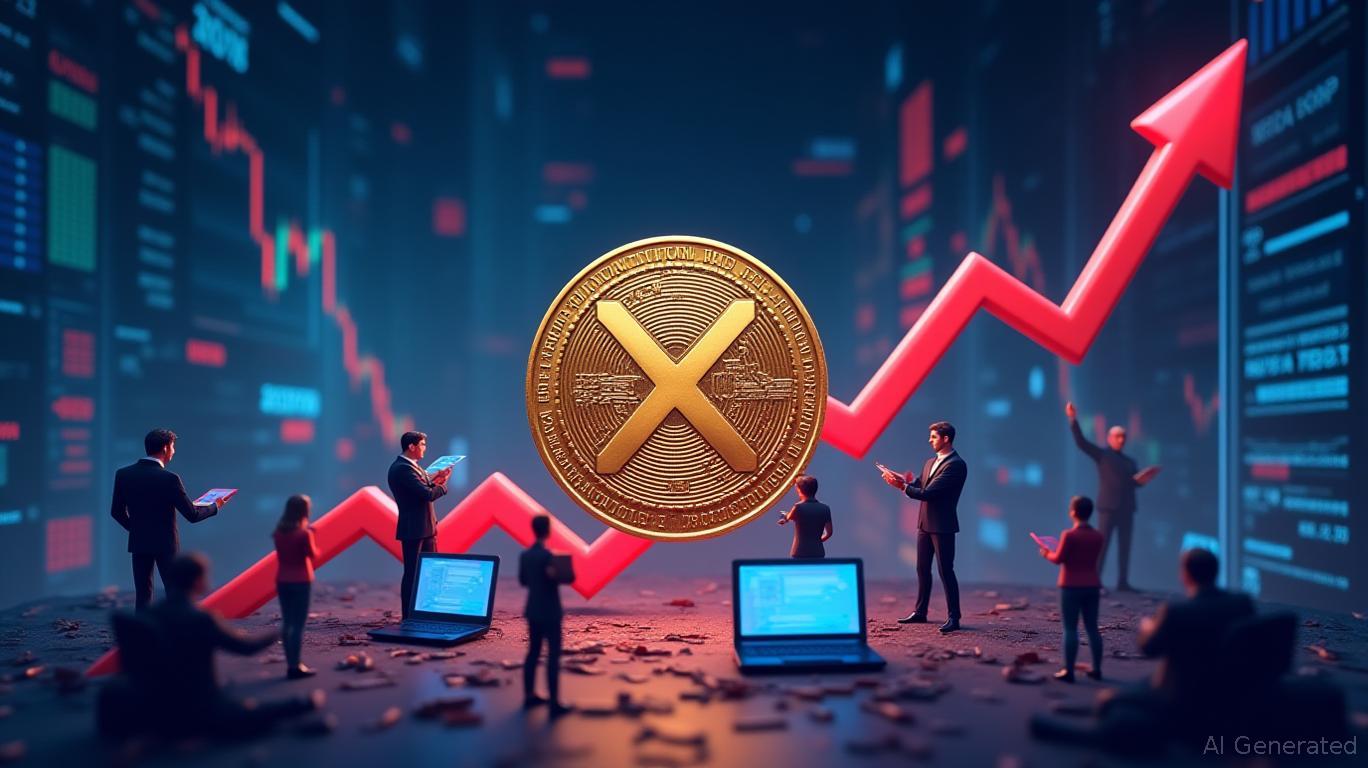Global authorities utilize blockchain technology to eliminate anonymity in cryptocurrency taxation
- Global tax authorities intensify crypto crackdown using blockchain analytics and data-sharing frameworks to track unreported gains. - IRS and HMRC enforce strict compliance: crypto classified as taxable property, with penalties up to 100% of owed taxes and criminal prosecution risks. - OECD's CARF mandates cross-border crypto reporting from 2026, aligning with U.S. Form 1099-DA and CRS to eliminate evasion loopholes. - Investors face mandatory disclosures (UK 2026 framework) and AI-driven audits, with HM
Tax agencies across the globe are ramping up their pursuit of undeclared cryptocurrency profits, utilizing sophisticated blockchain tracking tools and international data-sharing agreements to monitor transactions and enforce tax laws. Not reporting crypto-related taxes can result in hefty fines, audits, and even criminal prosecution, as governments tighten regulations and adopt global standards such as the OECD’s Crypto-Asset Reporting Framework (CARF), as reported by

The Internal Revenue Service (IRS) in the United States and the UK’s HMRC have both adopted assertive measures to oversee digital currencies. In the U.S., the IRS treats crypto as property, so taxable events include trading, selling, or using crypto, similar to how stocks or real estate are taxed. Authorities employ analytics platforms like Chainalysis to connect wallet addresses with real-world identities, even within decentralized finance (DeFi) networks. Likewise, HMRC has moved from simply educating the public to actively enforcing compliance, issuing “nudge letters” to those suspected of underreporting and imposing fines up to £300 for not providing personal information to crypto platforms, according to
Penalties for failing to comply are significant. The IRS may impose fines as high as 25% of unpaid taxes, while HMRC can demand up to 100% of the owed tax for nondisclosure. In the most serious cases, intentional tax evasion can result in criminal charges and jail time. These actions are part of a larger initiative to reduce the tax gap, with the UK projecting an extra £315 million in revenue by 2030 through crypto enforcement, Apex Accountants reports.
International collaboration is strengthening these initiatives. Beginning in 2026 under CARF, crypto exchanges and platforms will be required to report user transactions to tax authorities, including details on identities, disposals, and asset categories. This is in line with the U.S. Form 1099-DA and the Common Reporting Standard (CRS), promoting transparency across borders. Even privacy-focused cryptocurrencies like Monero (XMR) and
The message to investors is unmistakable: following tax rules is now mandatory. HMRC’s new framework, effective 2026, will require UK taxpayers to report all crypto-related activities, including trades, gifts, and staking rewards. At the same time, the IRS is focusing audits on wealthy individuals with substantial crypto assets, using artificial intelligence to identify discrepancies, Cointelegraph notes.
Those trading in unpredictable markets—such as the recent case of a crypto whale earning $17 million from bets on
To reduce exposure to penalties, specialists advise taking a proactive approach to compliance. Investors should keep comprehensive transaction records, use crypto tax software to calculate gains, and consider voluntary disclosure if previous returns were incomplete. Both HMRC and the IRS have programs that offer reduced penalties for early reporting, helping taxpayers avoid criminal prosecution, according to Cointelegraph.
As authorities strengthen oversight, the days of anonymous crypto trading are coming to an end. Investors must adjust to a new environment where transparency is enforced through technology and international cooperation, making digital assets less attractive for tax evasion.
Disclaimer: The content of this article solely reflects the author's opinion and does not represent the platform in any capacity. This article is not intended to serve as a reference for making investment decisions.
You may also like
Grokipedia's Bet: The Race Between AI Speed and Human Precision in Pursuit of Truth
- Elon Musk's xAI launched Grokipedia, an AI-driven encyclopedia challenging Wikipedia's dominance with real-time data and automated fact-checking. - The project faced delays over "biased training data" concerns and exhibits right-leaning slants, including downplaying the 2021 Capitol riots. - Unlike Wikipedia's human-edited model, Grokipedia uses AI to manage edits but faces criticism for lacking nuanced moderation and citation standards. - Wikipedia's human-centric model and co-founder Jimmy Wales dismis

Solana News Update: Connecting Traditional Finance and Decentralized Finance: Streamex Collaborates with Chainlink to Enable Transparent Gold Tokenization
- Streamex partners with Chainlink to integrate CCIP, enabling cross-chain GLDY transfers on Base and Solana. - The collaboration adds Proof of Reserve and Price Feeds for real-time gold reserve verification and tamper-proof data. - This enhances institutional trust in GLDY's gold-backed stablecoin through auditable transparency and zero-slippage security. - The integration aligns with growing demand for tokenized commodities, leveraging Chainlink's $100B+ TVL-secured infrastructure.

XRP News Today: Institutional Embrace and Rising Derivatives Interest Propel XRP's Key Growth in 2025
- XRP surged 5.4% to $2.57 amid institutional adoption, regulatory progress, and Ripple's strategic moves, including a $100M ETF milestone and CME derivatives demand. - The XRPR ETF, managed by REX-Osprey, reached $100M AUM with 40% from hedge funds and family offices, signaling growing institutional confidence in XRP's mainstream potential. - CME's XRP futures hit $26.9B in notional volume since May, reflecting strong institutional demand, while Ripple integrated Hidden Road into its new prime brokerage s

Ethereum Latest Update: ETHZilla Offloads $40M in ETH to Reduce Gap Between Stock Price and NAV
- ETHZilla sold $40M in ETH to fund stock buybacks, aiming to reduce its 30% NAV discount by repurchasing 600K shares at $12M. - The move follows a $250M buyback plan leveraging treasury strength, with remaining funds to continue narrowing the NAV gap until normalization. - Competitor BitMine expanded its ETH holdings to 3.24M, while ETHZilla's Satschel partnership targets tokenized real-world assets. - Analysts highlight ETHZilla's high Price/Book ratio (50.97) but note its liquidity-focused strategy alig
